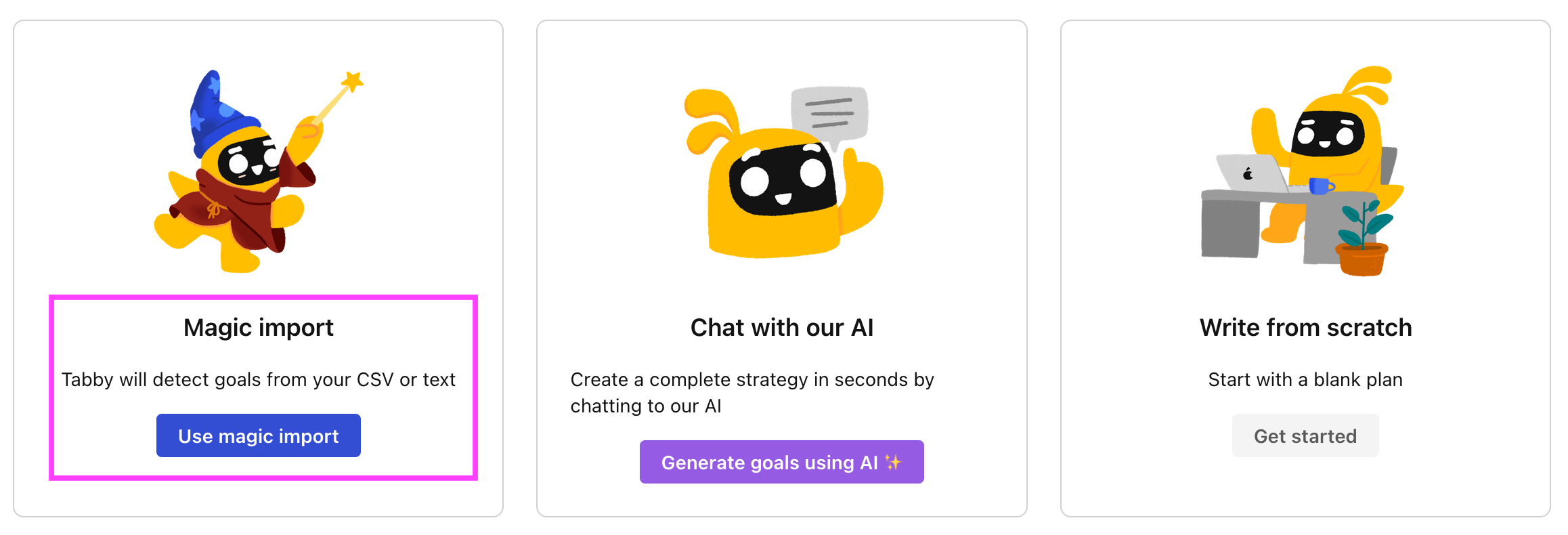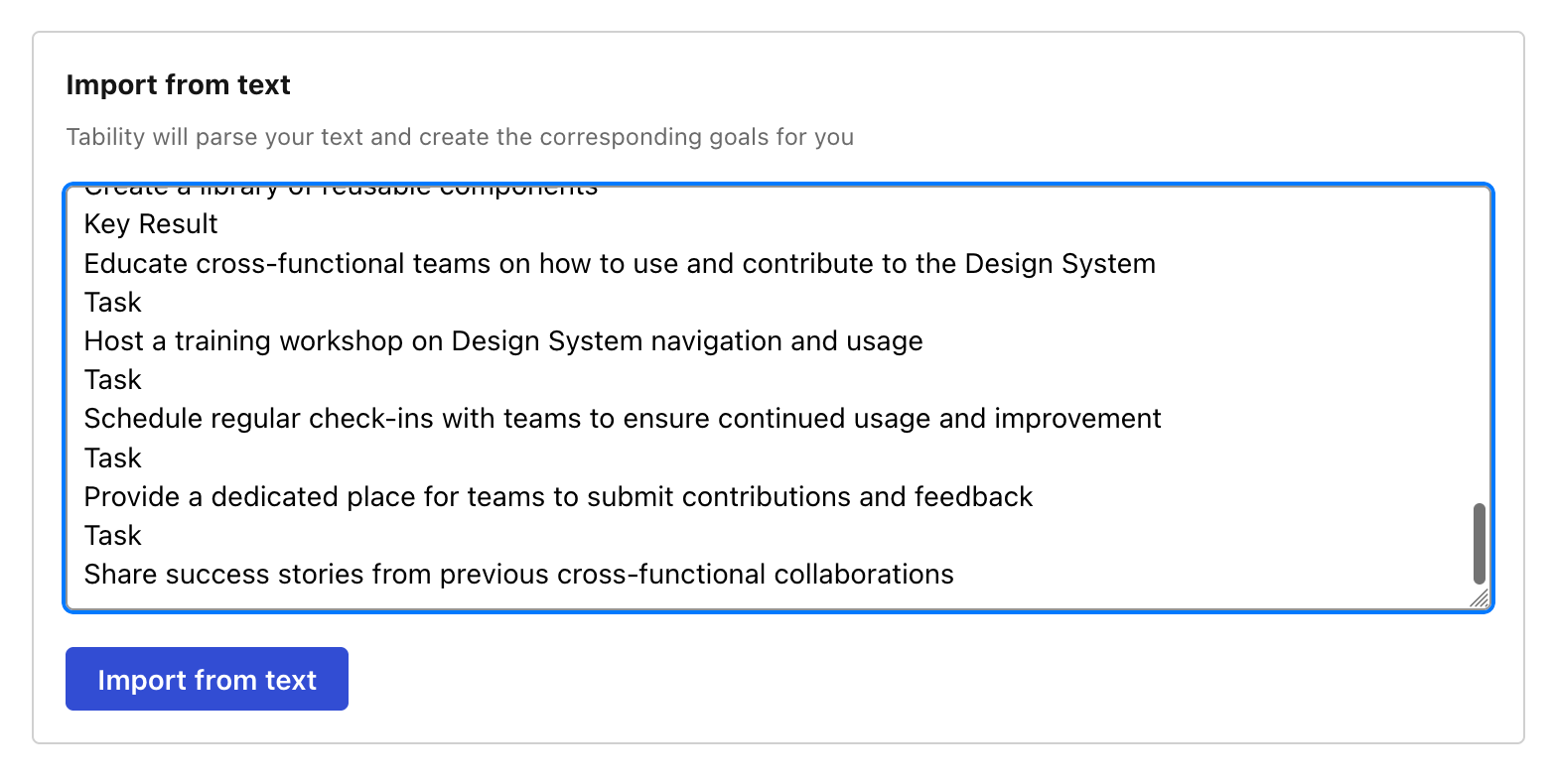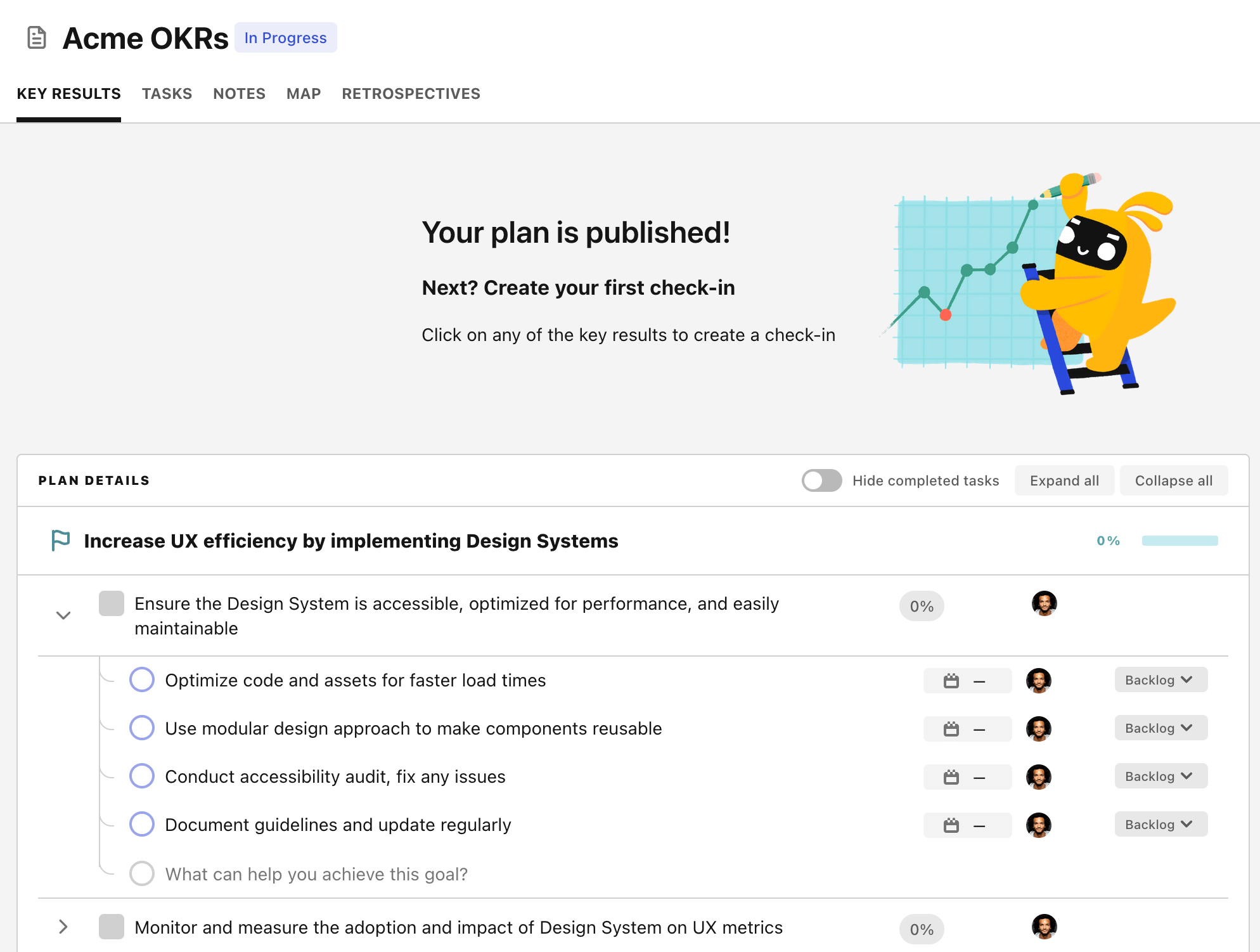OKR template to streamline processing of public records requests
Your OKR template
The second outcome is to implement an improved tracking system to expedite requests. This will be achieved by evaluating the current system for any inefficiencies, researching potential software upgrades, and training staff on how to utilize the new system effectively. The aim is to have 100% of the team proficient in the new system.
The last outcome focuses on decreasing the current backlog by 30% to improve workflow efficiency. This will be done by implementing a daily or weekly task completion plan, identifying and prioritizing key tasks within the backlog, and evaluating and optimizing current workflow procedures. The goal is to streamline the process, making it more efficient.
In sum, this OKR seeks to streamline the processing of public records requests by improving productivity through training, implementing an enhanced tracking system, and reducing backlogs to improve efficiency. The OKR uses tracking metrics to ensure that each objective is measurable and that progress can be tracked.
ObjectiveStreamline processing of public records requests
KRTrain team on new procedures to increase productivity
Conduct team-wide training sessions
Develop comprehensive training materials on new procedures
Monitor team's adaptation and provide feedback
KRImplement an improved tracking system to expedite requests
Evaluate current tracking system for inefficiencies
Research suitable tracking software upgrades
Train staff on new system utilization
KRReduce current backlog by 30% for a more efficient workflow
Implement a daily or weekly task completion plan
Identify and prioritize key tasks within the backlog
Evaluate and optimize current workflow procedures
How to edit and track OKRs with Tability
You'll probably want to edit the examples in this post, and Tability is the perfect tool for it.
Tability is an AI-powered platform that helps teams set better goals, monitor execution, and get help to achieve their objectives faster.
With Tability you can:
- Use AI to draft a complete set of OKRs in seconds
- Connect your OKRs and team goals to your project
- Automate reporting with integrations and built-in dashboard
Instead of having to copy the content of the OKR examples in a doc or spreadsheet, you can use Tability’s magic importer to start using any of the examples in this page.
The import process can be done in seconds, allowing you to edit OKRs directly in a platform that knows how to manage and track goals.
Step 1. Sign up for a free Tability account
Go tohttps://tability.app/signup and create your account (it's free!)
Step 2. Create a plan
Follow the steps after your onboarding to create your first plan, you should get to a page that looks like the picture below.

Step 3. Use the magic importer
Click on Use magic import to open up the Magic Import modal.
Now, go back to the OKR examples, and click on Copy on the example that you’d like to use.

Paste the content in the text import section. Don’t worry about the formatting, Tability’s AI will be able to parse it!

Now, just click on Import from text and let the magic happen.

Once your example is in the plan editor, you will be able to:
- Edit the objectives, key results, and tasks
- Click on the target 0 → 100% to set better target
- Use the tips and the AI to refine your goals
Step 4. Publish your plan
Once you’re done editing, you can publish your plan to switch to the goal-tracking mode.

From there you will have access to all the features that will help you and your team save hours with OKR reporting.
- 10+ built-in dashboards to visualise progress on your goals
- Weekly reminders, data connectors, and smart notifications
- 9 views to map OKRs to strategic projects
- Strategy map to align teams at scale